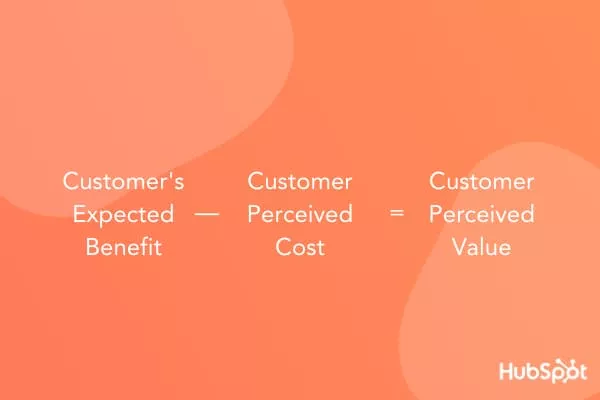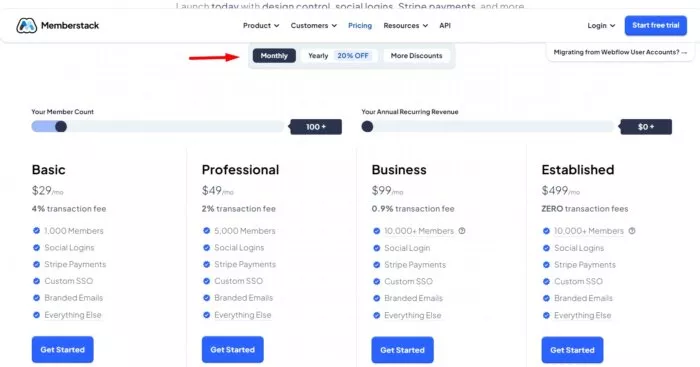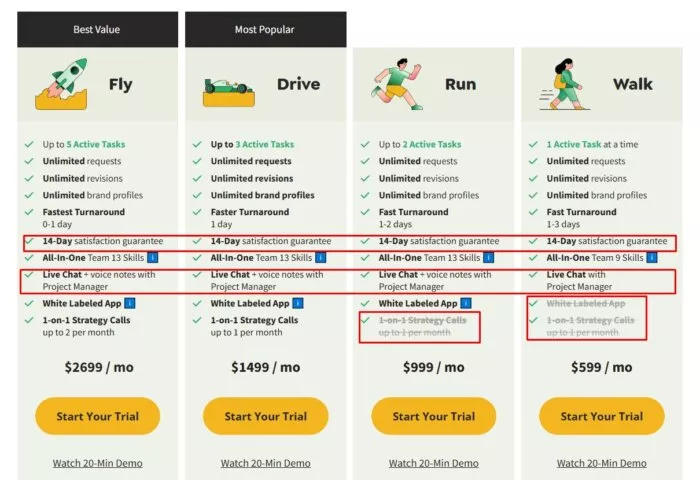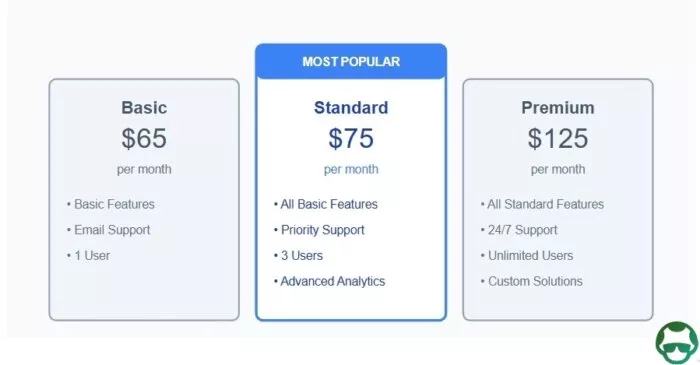How to Price Your Productized Service in 9 Steps

How to price your productized service feels like solving a complex puzzle without all the pieces. You know you're delivering value, but are your prices reflecting it?
Here's a shocking truth: According to Venta, 27% to 57% of business owners are undercharging. You might be one of them.
Take Mark R, founder of a content marketing agency. Despite having Fortune 500 clients and a talented team, his agency was struggling to scale. "We were drowning in work but swimming in shallow profits," he admits.
Everything changed when he discovered the data: specialized productized services command prices 2.8 times higher than traditional offerings. After restructuring his pricing strategy, Mark's average client value tripled in just 90 days - while his team actually worked less.
In this article, you will uncover:
- The hidden pricing principle that businesses use to command premium rates
- A subtle psychological shift that makes clients naturally gravitate to higher tiers
- The "value stacking" method that turns skeptical prospects into eager buyers
- A surprising testing insight that transforms your pricing page into a conversion machine
Ready to stop leaving money on the table? Let's dive in.
If you want to get your marketing work done for your business (or for your clients’), then you HAVE to learn more how you can delegate unlimited marketing projects & tasks without the headaches of hiring. Download this free guide: 33 Examples of Marketing Projects You Can Delegate to Growbo
1. Crunch Your Numbers: The Cost Analysis Blueprint
Learning how to price your productized service starts with understanding your true costs. You might think you know your numbers, but let me show you why most service providers leave money on the table.
According to a Unit4 study, 67% of service businesses underestimate their operational costs by at least 30%. This oversight is crushing their profit margins before they even start pricing their services.
Here's what you need to track for accurate cost analysis:
The Hidden Cost Factors
You're probably wondering about those sneaky expenses that creep up unexpectedly. Contimod reveals that last-mile delivery accounting for 53% of total delivery costs and for restaurants using food delivery platforms, the commission fees typically range from 15% to 30% of the total order value which imply that delivery costs can be higher than initially anticipated for many businesses in the service sector.

Let's break down why this happens. Your time spent on client communication, project management, and quality control adds up quickly. These 'invisible hours' often go unaccounted for in pricing calculations.
Here's a practical approach: Track every minute spent on your next three client projects. Include everything from the initial consultation to the final delivery. You'll likely discover you're investing 40% more time than you estimated.
Your Cost Analysis Action Plan
Start by documenting these three core areas:
- Time tracking for all activities (including administrative tasks)
- Monthly fixed costs (software, subscriptions, insurance)
- Variable costs per client (additional resources, specific tools)
Key Takeaways:
- Implement a comprehensive time-tracking system to capture all service-related activities
- Calculate your true hourly rate by including both visible and invisible costs
- Review and adjust your cost analysis quarterly to maintain accuracy
As you move forward with pricing your productized service, these cost insights will form the foundation for your pricing strategy. In the next section, we'll explore how to translate these costs into value your customers will gladly pay for.
2. Walk in Their Shoes: Mapping the Customer Value Journey
When pricing your productized service, understanding your customer's value perception becomes your secret weapon. Let me show you why this matters more than you might think.
Based on research on value-based pricing, businesses that align their pricing with customer value perception see a 31% higher income than their competitors.
Think about it from your customer's perspective. They're not buying your time or your deliverables - they're investing in transformation.
The Value Perception Framework
When people shop for things, they're looking for solutions to their problems or ways to make their lives better. Value appears when they find something they truly believe can do that for them.
When customers feel confident that a product or service will meet their needs and live up to what they expect, that's when they see its real worth.

Here's what your customers actually care about:
- Time saved or gained
- Problems eliminated
- Opportunities created
- Risks reduced
According to Hubspot customers are willing to pay up to 68% more for services that clearly demonstrate their impact on business outcomes.
You're probably wondering how to quantify this value. Let's break it down into measurable components.
Your Value Mapping Process
Start by answering these crucial questions:
- What specific problem does your service solve?
- How much is this problem currently costing your clients?
- What's the immediate and long-term impact of your solution?
Businesses that proactively communicate how they solve specific challenges can significantly improve customer loyalty. For instance, services that address constant pain points in consumers' lives tend to see higher retention rates.
Translating Value into Numbers
Create your value equation by calculating:
- Direct cost savings for clients
- Time efficiency gains
- Revenue increase potential
- Risk reduction value
Key Takeaways:
- Document specific value metrics that matter to your target clients
- Create a clear value proposition based on customer outcomes
- Develop a simple ROI calculator for prospects
Now that you understand your customer's value perspective, let's explore how to position your service in a crowded market - which we'll cover in the next section.
3. Stand Out or Step Back: Positioning Your Service in a Crowded Market
Knowing how to price your productized service requires understanding exactly where you fit in the market. Let's dive into how you can position your service to command premium rates.
According to a Forrester report, productized services that clearly differentiate their market position achieve higher profit margins than their generic counterparts and those with high levels of alignment realize 2.4x higher revenue growth and 2.0x higher growth in profitability
You're not just another service provider. You're solving a specific problem in a unique way.
Market Position Analysis
Start by mapping your competitive landscape:
- Direct competitors (similar productized services)
- Indirect competitors (traditional service providers)
- Market gaps and opportunities
Recent data from HubSpot shows that highly specialized productized services command prices up to 2.8 times higher than generalist offerings.
Here's what makes this insight powerful for your pricing strategy.
Your Differentiation Framework
Focus on these key elements:
- Unique delivery method
- Specialized expertise
- Target market specificity
- Results guarantee
Think about your service like a premium brand. What makes Tesla different from other car manufacturers? They're not just selling cars - they're selling the future of transportation.
Position-Based Pricing Factors
Consider these elements when positioning your service:
- Market segment sophistication
- Competition density
- Value proposition uniqueness
- Brand authority level
Key Takeaways:
- Define your unique market position before setting prices
- Identify specific elements that justify premium pricing
- Document your competitive advantages clearly
With your market position clearly defined, you're ready to structure your service tiers - which we'll explore in the next section.
4. Build Your Value Ladder: Crafting Irresistible Service Tiers
When pricing your productized service, creating the right service tiers can make or break your success. Let me show you how to build a value ladder that converts.
Well-structured service tiers can increase customer retention. Studies show that a 5% increase in retention can lead to a 25% increase in profit.
Think of your service tiers as a journey, not just a menu of options. Each tier should solve progressively bigger problems for your clients.
The Tier Structure Blueprint
Design your tiers following this framework:
- Entry-Level (Problem Solver) Think of this as your starter package. It's like a basic social media management service – you get essential posts for two platforms, basic engagement monitoring, and monthly performance reports. Simple but effective for businesses just starting their social media journey.
- Professional (Solution Amplifier) This is your most popular option that adds more value without overwhelming the budget. Same social media service, but now with content creation, engagement strategies for four platforms, hashtag research, and bi-weekly performance calls. Enough extra benefits to drive real growth, while keeping it affordable.
- Premium (Transformation Enabler) Your comprehensive solution for clients who want maximum impact. Now you're getting social media management across all major platforms, custom content creation, influencer outreach, crisis management, competitor analysis, and weekly strategy sessions. It's for businesses ready to dominate their social media presence.
5. Master the Margins: Setting Profit Targets That Scale
Understanding how to price your productized service for sustainable growth means getting your margins right from the start.
A Deloitte study reveals that successful productized service businesses maintain a minimum 65% gross margin across all service tiers.
Let's break down your margin structure in a way that ensures profitability at every level.
Focus on these key areas for the Margin Calculation Framework
- Direct delivery costs
- Overhead allocation
- Scale potential
- Growth investment
Remember: Your margins aren't just about profit - they're about creating capacity for growth.
6. Design Your Money Machine: Structuring the Perfect Pricing Model
Now it's time to package your productized service into a pricing model that sells itself. Let's build your pricing structure. This previous guide I wrote on pricing strategies might help you.
According to ProfitWell, subscription-based productized services grow 2.5x faster than those using traditional pricing models.
Your pricing model should reflect both your value delivery and your operational efficiency.
Pricing Model Elements
Include these critical components:
- Base price structure
- Payment terms
- Volume discounts
- Long-term commitment incentives

The key is creating a model that's both profitable for you and irresistible to your ideal clients.
Key Takeaways:
- Create clear value differentiation between tiers
- Set margins that support sustainable growth
- Design a pricing model that encourages long-term relationships
Next, we'll explore how to stack additional value into your offering to justify premium pricing.
7. Stack to Win: Building Your Unique Value Proposition
Mastering how to price your productized service means creating an irresistible value stack. Let's transform your offering from a simple service into a must-have solution.
Think of your value stack as a pyramid of benefits that makes your pricing feel like a bargain.
You build your stack with these elements:
- Core service delivery
- Strategic bonuses
- Implementation support
- Results guarantees

8. Test, Learn, Pivot: The Scientific Approach to Pricing
Great pricing strategies don't come from guesswork – they come from testing what actually works in the market. Think of it like running experiments: try different approaches, measure the results, and adjust based on what you learn.
Start by testing different price points with similar customers to see what works best. Pay close attention to what your customers tell you, both through their feedback and their buying behavior. Watch your sales conversion rates closely, and keep an eye on how your competitors react to your pricing changes.
Remember that finding the right price isn't a one-time task. Markets change, customers' needs evolve, and what works today might need adjustment tomorrow. Focus on building a pricing approach that can adapt rather than searching for one perfect price point.
9. Psychology Meets Profit: Implementing and Optimizing Your Pricing Strategy
Smart pricing isn't just about numbers – it's about understanding how people think and make buying decisions. When we combine proven psychological principles with careful data analysis, we can create pricing that feels right to customers while driving better business results.
4 ways to make your pricing more persuasive:
1. The Power of Anchoring - Think of anchoring like setting the stage for your price. When people see a $1,000 premium option first, a $500 option suddenly feels more reasonable. It's like walking into a luxury car dealership – after seeing the $80,000 models, the $40,000 car starts to look like a great deal.
2. Strategic Decoy Pricing - This is about giving customers a clear choice by offering options that make your target price more attractive. For example, if you want to sell your $75 service package, offering a bare-bones version at $65 and a premium version at $125 can make that middle option feel just right.

3. Building Trust Through Social Proof - When customers see that others are happy with your pricing, they feel more confident in their purchase. Share real customer stories about the value they've received, or show how many people have chosen each pricing tier. It's like seeing a busy restaurant – the crowd tells you something good is happening inside.
4. Creating Healthy Urgency - Nobody likes missing out on a good deal. Limited-time offers or exclusive pricing for early adopters can motivate decisions, but be careful to keep it honest and genuine. Think "only 50 spots available at this price" rather than fake countdown timers.
Monitor these key metrics for ongoing optimization:
- Customer acquisition cost
- Lifetime value
- Churn rate
- Net revenue retention
Key Takeaways:
- Build a compelling value stack that justifies your pricing
- Implement systematic testing to validate your pricing strategy
- Use psychology and data to optimize conversions
Now you're ready to implement your pricing strategy with confidence.
If you want to
CONCLUSION
You've just discovered the blueprint for transforming your productized service pricing from guesswork into a strategic advantage. This isn't just about raising prices - it's about aligning your pricing with the true value you deliver.
Here are your essential action steps:
- Document your true delivery costs (including those hidden operational costs)
- Build a three-tier pricing structure
- Create a value stack that justifies premium pricing
- Test and optimize your pricing regularly
- Maintain minimum 65% gross margins for sustainable growth
While you're focused on implementing these pricing strategies, who's handling all your marketing execution? Growbo is your all-in-one marketing team that will handle everything from content creation to funnel building while you focus on optimizing your pricing strategy.
Start your $7 trial for 7-day trial today.
What pricing challenges are you facing in your business? Share your thoughts in the comments below - I'd love to hear about your experience implementing these strategies.
Keep Growin,’ Stay Focused,

Image Credits:
- https://blog.hubspot.com/sales/the-psychology-of-value-perception-infographic
- https://www.growbo.com/types-of-pricing-strategies/













